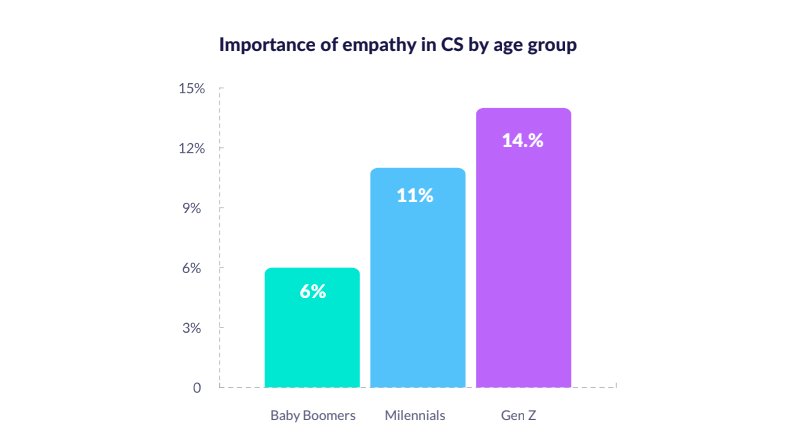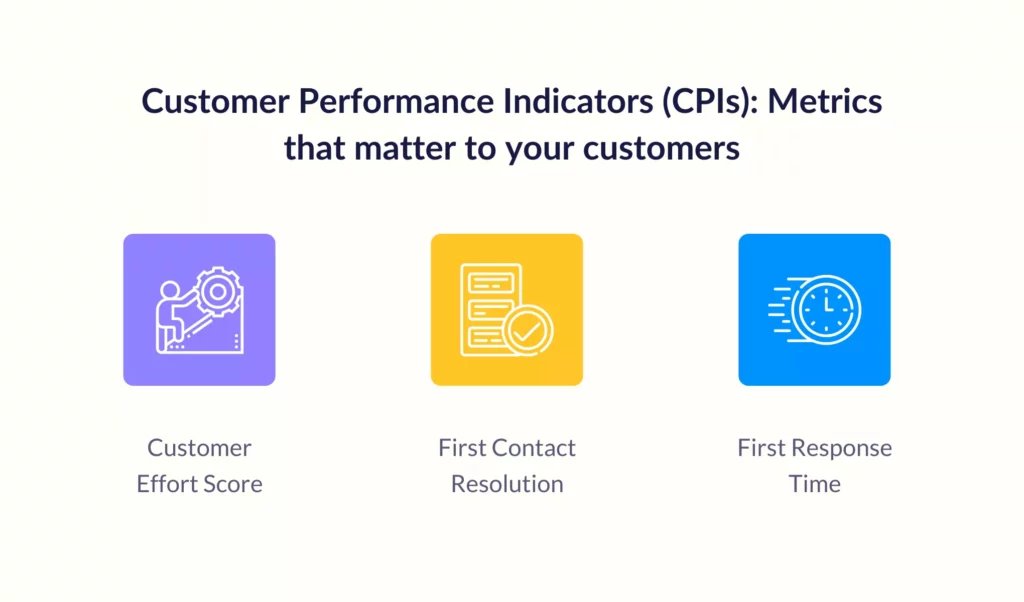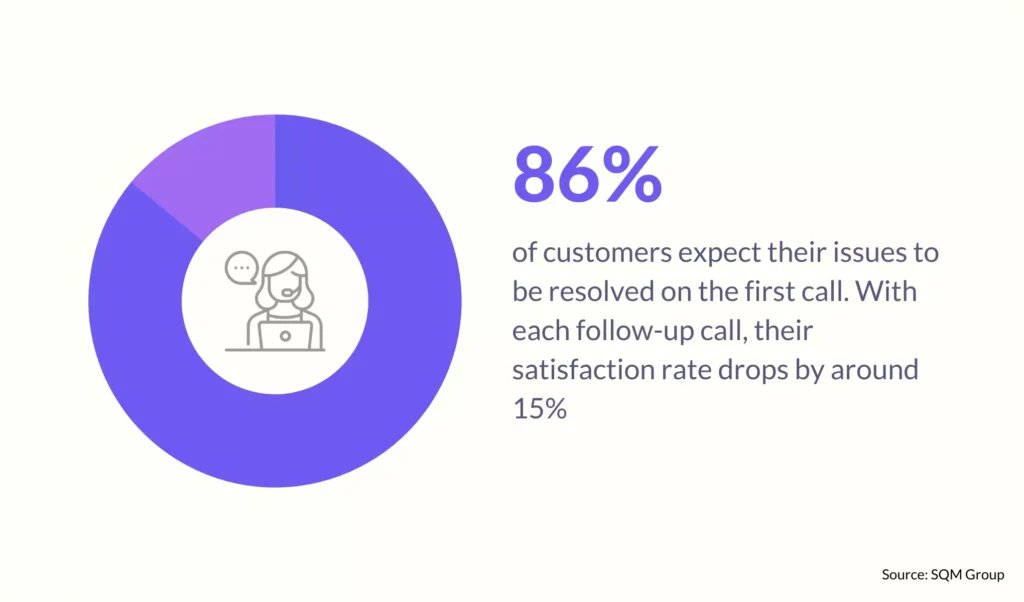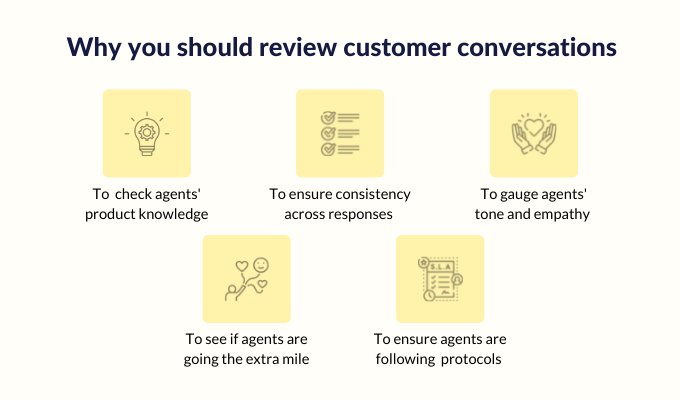Data carries a lot of weight in the organizational landscape today. It forms the basis of strategy and execution decisions, and drives critical investments, both in the workforce and technology. It’s the subject of research studies, boardroom discussions, and conferences – all for good reason.
According to a recent McKinsey report, 33% of companies claim that scaling data and analytics has helped them increase revenue from the existing stream. 24% claim that it’s helped them tap into new revenue streams. That’s significant for organizations that want to survive and thrive in the current competitive and uncertain market situation.
Most businesses today realize the value of data insights in helping them streamline processes, improve performance, and increase returns. There are, however, a number of critical metrics and signals that companies still fail to effectively track and benefit from.
A majority of Key Performance Indicators (KPIs) are far too focused on measuring productivity and performance. Concentrating on those KPIs alone can make organizations lose sight of the more critical metrics that drive business growth – user or customer experience metrics.
Which is what we are trying to address here.
In this article, we’ll help you reassess and optimize the efficacy of the metrics you track, so they reflect the customer experience more accurately.
Table of Contents
- Why most popular CX metrics can be limiting when it comes to capturing customer experience
- Five best practices to gauge CX endorsed by customer-centric leaders
- 1. Identify your Customer Performance Indicators (CPIs) – Focus on outcomes that matter to your customers
- 2. Pay attention to actions – Don’t depend on survey responses alone
- 3. Watch out for signals – Monitor customer behaviour, and their interactions with your product
- 4. Be ace problem solvers – Try resolving customers’ issues at the very first go
- 5. Metrics only tell a part of the story – Context is critical
- Let your metrics guide you, and your customers define them
Why most popular CX metrics can be limiting when it comes to capturing customer experience
Customer experience is complex and dynamic. Companies can’t adopt a one-size-fits-all approach when it comes to delivering superior customer experiences. Needless to say, measuring CX then isn’t that simplistic either.
One of the most popular metrics considered an indicator of support quality and customer satisfaction is the Customer Satisfaction Score (CSAT). In fact, according to Hiver’s Customer Service Benchmark Report, 41% of customer service professionals say that CSAT is their team’s most important metric.
But ‘satisfaction’ is a subjective word. It means different things to different people.
Hiver’s recent Customer Support Through the Eyes of Consumers survey report, for example, found that younger generations value empathetic support interactions far more than older generations.
As such, both their ideas of what makes for a satisfying support experience can differ based on not just the quality of service you provide but on their perception of it.

Furthermore, CSATs also don’t always accurately reflect the quality of your support. Customers can hold you responsible for things that are often out of your control.
Another factor that can contribute to skewed CSAT results is that most often customers respond to these surveys only if they’re “satisfied” or “dissatisfied” with your service. There’s little scope for capturing neutral customer experiences.
Besides CSAT, Net Promoter Score (NPS) is another metric that many companies consider to be the holy grail of customer experience metrics. Since the time it was first introduced in 2003, it’s been touted to be an excellent measure of customer loyalty. But in recent years, there have been numerous studies claiming that it’s in fact not the best predictor of loyalty, success, or growth.
According to one such detailed study by Methodical, not only does NPS fail to accurately measure loyalty, satisfaction, or the success of customer experience initiatives, it also doesn’t accurately reflect real-world customer behavior.
Furthermore, NPS has little bearing on a company’s growth, and can, in fact, create a false sense of vanity and security, and can urge companies to misallocate important resources.
So, does that mean these metrics are pointless and you shouldn’t be tracking them?
Certainly not!
Despite limitations, these popular metrics can yet offer you some very useful insights into customer perception. But to get a more holistic picture of the customer experience, there are other metrics you need to be focusing on.
Five best practices to gauge CX endorsed by customer-centric leaders
1. Identify your Customer Performance Indicators (CPIs) – Focus on outcomes that matter to your customers
In 2020, Harvard Business Review published a compelling article that argued that the metrics companies most often track such as customer retention rate, revenue churn, growth, etc. are all company-centric. Organizations, especially those that claim to be customer-centric, shouldn’t just measure how customers are performing for their company. They should also measure how their company is performing for customers.
An effective way to distinguish the two, the article further suggested, is by defining the key Customer Performance Indicators (CPIs) for your business. These include outcomes (such as time or money saved, convenience, recognition, etc.) that are important to your customers.
For example, Customer Effort Score (CES),which is a measure of the effort it takes for customers to get an issue resolved, a query answered, or a request fulfilled, is a great example of a CPI because it focuses on outcomes (convenience and time saved) that matter to customers.

As per Michelle Perez, Director of Customer Support at The Lifetime Value Company, minimizing customers’ effort, and valuing their time are key to gaining their trust. By tracking how fast and efficiently they handle customer calls, the company ensures its customers can have their issues resolved quickly and satisfactorily.
We track wait times and abandonment ratesthatindicate how long a customer is willing to hold before they disconnect. If these are at an agreeable number, we save the customer the time and effort of having to look for other means of resolving their inquiry. We also regularly track our first response timeto monitor how quickly we answer our customers’ inquiries, and if we’re meeting/exceeding the time we guarantee.
Michelle Perez, Director of Customer Support, The Lifetime Value Company
Apart from the above metrics, the company routinely monitors the subject of their calls to identify any spiking trends that need their attention. Doing so allows them to deliver support proactively to customers, even before they experience an issue. They also ensure that they staff their most popular support channelsappropriately, so they can service customers quickly and efficiently.
By adopting CPIs like The Lifetime Value Company does, companies can minimize customer frustrations, exceed customer expectations, enhance their experience, and thereby scale growth.
Focusing on CPIs can help businesses retain customers and increase their lifetime value.
2. Pay attention to actions – Don’t depend on survey responses alone
When it comes to measuring customer advocacy and loyalty, most companies heavily rely on NPS surveys and CSAT scores. However, more often than not, those scores and survey responses alone don’t give a 100% accurate picture of customer behavior or experience.
NPS, for example, doesn’t tell you whether your “promoters” are actually promoting your company’s products and services to others. Responses from CSAT surveys primarily reflect a customer’s satisfaction or dissatisfaction on the basis of a single experience or support interaction; they don’t reflect their overall sentiment about your company.
According to Alex Kehoe, Co-Founder & Operations Director at the digital marketing company, Caveni, customer surveys can provide some useful insights, but they don’t measure customer experience, support quality, customer loyalty, and their collective bearing on your company’s growth in the best way.
So then what are the metrics that do indicate you’re doing a great job at keeping your customers happy?
Alex makes a strong case for the key customer experience metrics Caveni tracks, and probably you should, too.
Customer satisfaction on the whole can be very difficult to track. For us, the most actionable metrics in customer service arethenumber of returning customers, the number of customers who are referred, and the number of positive reviews our organization accumulates.
Alex Kehoe, Co-Founder & Operations Director, Caveni
Alex believes that secondary performance indicators like post-customer service surveys are far less valuable than returning customers, or customers that refer others based on their experience. It’s a classic scenario of actions speaking louder than words.
3. Watch out for signals – Monitor customer behaviour, and their interactions with your product
Feedback from customer surveys often fails to capture many important behavioral signals. Customer interactions on your website and with your product are critical indicators of their experience and intent. You must monitor them in tandem with your survey responses.
Certain behavioral cues like what parts of your website or product do customers spend the most time on or bounce off from, which product features are they using the most or the least, etc., can provide you more nuanced insights – sometimes far more precise than customers’ survey answers.
Recommended Reading

Allison Murdoch, Uniqode’s Customer Success Manager, shares similar views. Apart from tracking certain company-specific KPIs to gauge revenue growth and support quality, they also keep a close tab on new user adoption and experience metrics for their QR Code generator and marketing platform.
We track retention rate, customer churn rate, overall number of support tickets, number of support tickets escalated to engineering, number of monthly customers onboarded, and several product adoption metrics. These include how frequently users are logging in, how many codes and scans they have, how recently they’ve logged in, etc.
Allison Murdoch, Customer Success Manager, Uniqode.
Collectively, the above metrics help the team identify product issues as they emerge. They also give them an understanding of user behavior so they can make ongoing improvements in their onboarding strategy.
These metrics allow us to be proactive in our customer outreach strategy and determine whether our onboarding is adequate. Also, if we find that users are not logging in or creating codes, we can check in with them to get more in-depth insights into their experience.
Allison Murdoch
As it turns out, the KPIs adopted by Uniqode have solid stats backing their efficacy. Research shows that better onboarding equals better customer retention.
According to a study by Wyzowl, 80% of users deleted an app because they didn’t know how to use it. The same study found that 86% of people are more likely to stay loyal to a business that invests in onboarding content that “welcomes and educates” them.
4. Be ace problem solvers – Try resolving customers’ issues at the very first go
It’s no secret that customers today are more demanding than ever. If they don’t see value in your product or are unhappy with the service you deliver, they’ll leave, and they’ll leave soon.
According to Hiver’s survey report, 60% of consumers feel that they’d switch to an alternate brand after two or three bad experiences. Roughly 30% claim they’d make a switch after only a single bad customer support experience.
Another research by Statista found that 33% of global customers consider getting their issues resolved in the first interaction as the most important aspect of good customer service.
Carsten Schaefer, Founder and Support Head at Trust, a SaaS company, understands how frustrating it can be for customers to go through the trouble of long holds and constant back-and-forth before having their queries resolved.
One of the most important metrics for us to track is First Call Resolution (FCR). It’s the percentage of inbound calls that we resolve the first time around. In other words, the customer gets what they wanted on their first call with us. The better this rate is, the better we are doing our jobs with customer support, and the happier our customers are.
Carsten Schaefer, Founder and Support Head, Trust

According to Carsten, FCR can also provide useful insights about certain areas of your product and service quality that need improvement.
For example, you may learn that your agents are unable to resolve customer queries at the first go because they’re overwhelmed with a huge volume of customer requests. You could then ease off their burden by automating repeatable tasks and ensuring workflows are clearly defined.
Investing in the right customer service software can help you tackle these problems easily.
Recommended Reading

5. Metrics only tell a part of the story – Context is critical
We’re all aware that metrics are important – that’s a no-brainer.
But measuring them in isolation, and without necessary context, will only show you what the results of your strategy implementation are. Theywon’t be able to tell you why those are the results you achieved.
For Carter Seuthe, CEO of Credit Summit, the most important customer service metrics include first response time (FRT),customer satisfaction score (CSAT),and average handle time (AHT).
We look at these metrics individually and as a whole to determine how well our agents are doing and how we could better serve our customers.
Carter Seuthe, CEO, Credit Summit
According to Carter, tracking the above metrics is important, but not without delving into the specifics of the customer experience by regularly reviewing customer conversations.
Monitoring customer conversations can help you get a more holistic picture of your service quality – far beyond what the numbers tell you.
Customer conversations help you understand whether your agents embody key soft customer service skills like empathy, the ability to listen and communicate with clarity and objectivity, and the ability to handle pressure and stressful situations with composure.

Without such a multifaceted understanding of your customer service efforts, your strategies to measure and improve your support quality, and subsequently, the customer experience, won’t deliver the kind of results you desire.
Let your metrics guide you, and your customers define them
Your organization must have its own chosen set of metrics that serve as a guiding light for performance improvement, strategy execution, and growth. Implementing those metrics might have involved a lot of trial and error, as well as time and effort from your teams.
But regardless of your organization’s scale or industry, if you want to adopt a customer-first approach, you need to dig deeper into understanding your customers’ needs. You need to implement these customer experience metrics and track signals that don’t just make sense in theory, but actually reveal the outcomes that matter to your customers, so you can constantly improve upon them.
Ensure your surveys include more telling questions about the customer experience such as: “Has our product or service helped you solve the challenges you were facing earlier?”, “What are some of the goals our product or service has helped you achieve?” and “Do you believe that the value our product offers is worth the price you pay for it?”
Answers to such questions will more accurately indicate your customers’ pain points, expectations, and experience.
Remember – Your customers are your greatest asset, and investing in them is your most reliable growth strategy.


































